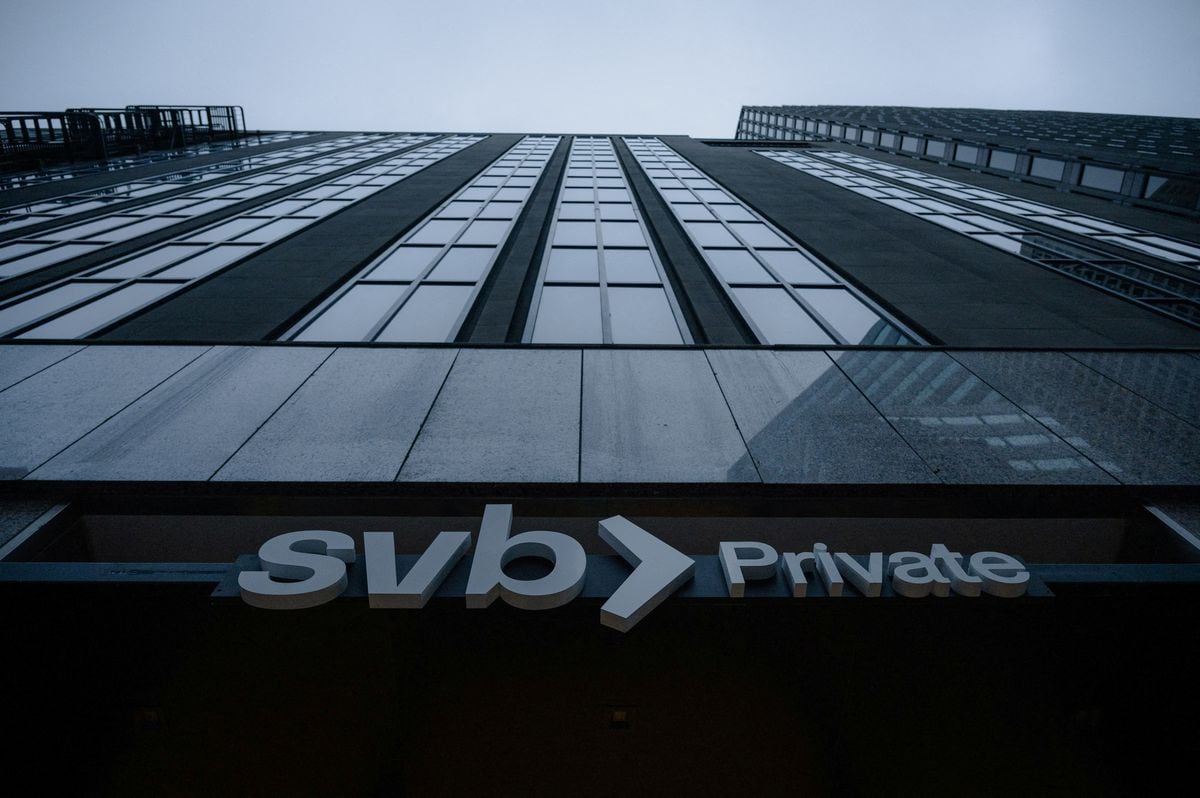The best definition of debt I've found is: debt is the difference between who you are, and who you think you are.
Those who get into debt usually have (very) optimistic expectations of their future.
But the one who ends up paying the credit is the landed version of oneself.
That spectacular future in which everything goes well, sometimes never comes.
But the debt quotas are, intact, one hundred percent.
Something like this happened to Silicon Valley Bank (SVB), the trigger for what, hopefully not, could become a financial crisis of large proportions.
This situation was not generated because the SVB had taken huge positions in insecure assets, difficult to recover.
But because it took on debt in the form of huge deposits that came in at a rapid pace—many of these demandable on demand—but could not lend them at the same rate and invested them in what seemed to be the safest assets available—US Treasury bonds.
With the risk that its liabilities and its assets had different maturation times.
Today it seems easy to blame them for being irresponsible, but such a decision could have passed for reasonable at the time.
Given the FED's increase in interest rates to combat US inflation, treasury bonds fell in price, thereby mismatching the SVB's liabilities and assets.
This might have been obvious a month ago, but it wasn't visible.
That is the other worrying finding.
The authorities and economists are specialists in explaining as evident something that weeks before we failed to notice.
There is the excuse that crises are like some viruses: they go dormant in the body and are unleashed when there is a drop in defenses.
At that time they grow exponentially, attack and get sick.
In the economy, the "fall in defenses" occurred with the collapse of the value of assets with low credit risk but greater market risk.
Your debt mismatch can happen quickly and reach enormous magnitudes.
After having lived through the covid, it is easy for us to make the simile between the expansion of a pandemic and a debt crisis.
How to contain it?
Timothy Geithner, United States Secretary of the Treasury during the Obama administration, recalls in his book
Stress Test, Reflections on Financial Crises
, that the way to stop a bank run is to show the world that there is no need to run.
Put the money in the windows of the banks, so that people see that they can still lend without any problem.
The former Secretary of the Treasury, Timothy Geithner, together with the then President of the United States, Barack Obama.EFE
The money, however, has been flowing.
Since the beginning of the week, large depositors in the United States have moved from small and medium-sized banks to larger ones.
Banks like JP Morgan, Bank of America, Citigroup and Wells Fargo received billions of dollars in new deposits in a matter of days.
At the same time, rating agencies, a sensitive indicator of short-term market movements, began to downgrade their ratings on troubled entities.
In the 2008 crisis, these agencies were accused of being too condescending in ratings.
Since then they do not want to be late.
Standard&Poor's and Fitch put First Republic bank in the category of
junk
or junk bonds, and Moody's placed medium-sized banks such as UMB Financial, Western Alliance, Zions Bancorp, Intrust Financial, among others, under review for a possible downgrade.
They cite unrealized losses on their asset portfolios and reliance on uninsured deposits.
They are symptoms of contagion.
A recent editorial in
The Wall Street Journal
, one of America's most widely read economic dailies, identified the root cause of many years of poor monetary and regulatory policy decisions, and not simply a misguided investment bet by SVB leadership. and others.
In effect, years of flooding the market with dollars at near-zero cost left banks holding more deposits than they could reasonably lend, in the case of SVB to
tech
start-ups .
With which they ended up buying government bonds, considered “safe”, according to the regulation.
These ended up being the two blades of a pair of scissors that would split the bank's balance sheet.
A branch of the First Republic Bank, rescued by the big banks. MIKE SEGAR (REUTERS)
"The value of those bonds declined as the Fed raised interest rates to control the inflation it helped create."
In other words, in the opinion of the
WSJ
, the blame must be shared by the bankers and the authorities, the same ones that now constitute the fire brigade that must put out the fire.
What happened in the years prior to 2008 is repeated: the authorities that irrigated liquidity to the market and led it to take excessive risks, later had to literally flood it so that the fire would not spread.
Crises reveal all the excesses of the financial and regulatory system.
The package designed to resolve the crisis at SVB and other midsize banks came with two controversial measures: 1) extending deposit insurance above the established limit of $250,000, giving a bailout to all depositors, and 2) the FED will accept several types of assets that trade at a discount, at par value, as collateral for emergency loans.
They are types of salvage that bring complications.
In addition, the big banks raised $30 billion to bail out First Republic.
A senior
Bloomberg
analyst sees these decisions as reasonable, even if they promote so-called "moral hazard."
In other words, by solving this crisis they end up sowing the seeds of the next one by inducing more imprudence.
Another consequence is that now the Fed is torn between continuing to fight inflation by raising interest rates, or remaining quiet for a while in fear of fueling the tornado that is engulfing assets and financial institutions.
Inflation versus banking crisis, a dilemma that was not imagined a couple of weeks ago.
For us mortals, who live far from the big financial and regulatory centers, the consequences can be of unimagined magnitude.
Quotations of episodes of international recession and turbulence, triggered by increases in Fed interest rates, are beginning to appear everywhere: the Mexican debt crisis of 1981 and Latin America's lost decade.
The dotcom
bubble burst in 2001. The
subprime
mortgage crisis
in 2008.
In particular, the memory of the eighties in Latin America is particularly painful.
As then, the emerging countries have borrowed to face the covid, and now face large annual interest payments.
If their currencies are devalued, in which Argentina and Colombia stand out, it will be necessary to ask taxpayers for more money to service the foreign debt.
It is not easy for any country, much less for those that advance aggressive spending and populism agendas.
Let's not continue with the gloomy arguments.
This can still be stopped before escalating.
But everyone must do their own thing, both in the center and on the periphery.
Prudence and seriousness.
Poise and tell the truth.
Do not believe that one is the one who is not, nor take on debts that can be difficult to pay.
If the debt is the difference between our two personalities, and the crises are the self-recognition of what we really are, what the Fed and the US Treasury do is prevent us from recognizing our mistakes and learning from them.
This is how we (the bankers, I mean) will behave, like daddy's sons who get out of trouble over and over again and learn nothing.
Juan Carlos Echeverry
is Ph.D.
in Economics, former Minister of Finance of Colombia and former CEO of Ecopetrol.
Subscribe here
to the EL PAÍS newsletter on Colombia and receive all the latest information on the country.
Sign up for free to continue reading
LOGINSIGN UP
Or subscribe to read without limits





